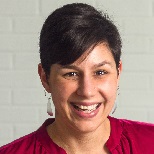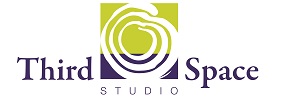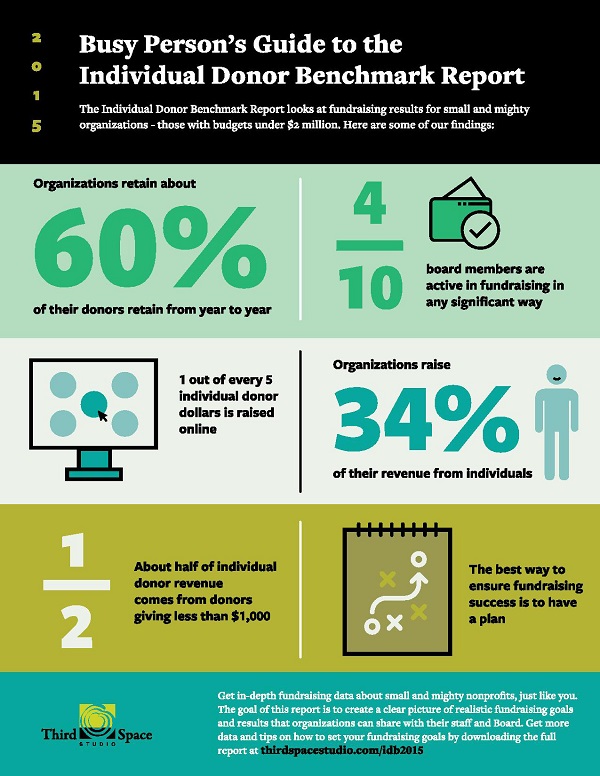 Special to the Philanthropy Journal
Special to the Philanthropy Journal
By Heather Yandow
How does your nonprofit stack up against other organizations? What does the average organization’s donor base look like? Or what can you expect to raise from monthly giving?
The Individual Donor Benchmark Report answers all those questions and more. The report, which compiles data from nonprofits with revenues of under $2 million, provides a number of interesting findings, including:
 The best way to ensure fundraising success is to have a plan.
The best way to ensure fundraising success is to have a plan.- Organizations raise 34% of their revenue from individuals.
- About half of individual donor revenue comes from donors giving less than $1,000.
- 1 out of every 5 individual donor dollars is raised online.
- 4 out of 10 board members are active in fundraising in any significant way.
This year, the data also found the average donor retention rate for nonprofits is 60%. 6 out of 10 donors give again – and 4 out of 10 donors don’t. If your organization has a donor retention rate around 60%, you may be asking yourself two questions:
- How can we increase retention?
- How can we find more new donors to replace the donors we are losing each year?
Here are a few tips to help you think about how to answer those questions:
Increasing Donor Retention
 If you want to increase your retention rate, the best strategy is to view your individual donor fundraising program as a relationship development program. Your goal should be to build a relationship with your donors, where part – and only part – of that relationship is about their financial support for the organization. Here are a few ways to shift the focus to your relationship:
If you want to increase your retention rate, the best strategy is to view your individual donor fundraising program as a relationship development program. Your goal should be to build a relationship with your donors, where part – and only part – of that relationship is about their financial support for the organization. Here are a few ways to shift the focus to your relationship:
- Consider your organization from a donor’s perspective. Even when we are doing many things to communicate with and engage donors, sometimes there are holes in our plan. Find the holes. Walk through the experience that different types of donors have with your organization. What happens when a new donor makes a $25 gift? $2,500 gift? What happens when someone gives online? What is the experience for a $50 a year donor? You may find that with a little intentionality you could be doing a much more effective job of engaging your donors with your work.
- Remember what you learned about your donor. As a development director, I learned to listen carefully in major donor meetings and record what I’d learned after the meeting for future cultivation and solicitation. While this kind of attention is standard procedure for major donors, there’s an opportunity to use some of the same ideas with everyday donors. As your donors click on links in your emails, respond to direct mail solicitations, or attend events, they are giving you information about what interests them. If you are diligent, you can capture that information and begin to develop a picture of your donors. Organizations can also survey donors to gather information about their interests and use that information to tailor solicitations.
- Thank donors seven times before you ask them again. This advice has been around for a long time, but I still get surprised looks and big sighs when I share it. “Seven times?! How could we possibly do that?” First of all, it’s a guideline – but the real point is that you should not treat donors like ATMs, only coming to them when you need money. You should be in touch year-round to share the results of their donations (and your work) and to thank them for their support. These thank you touches don’t need to generate a lot of extra work – think about content that you are already producing that could be re-purposed as a donor thank you: annual reports, updates for the board, or grant reports.
Finding new donors
You may be able to increase your retention rate, but you will likely also need to focus on finding new contacts and developing strategies to convert them to donors. One powerful framework for thinking about cultivating new donors is the cycle of engagement.
The cycle includes the following components and questions:
- Opening the door to potential new donors. How do you find new potential donors? How do you collect contact information from potential donors? What have been the best ways for you to find new donors in the past?
- Thanking and tracking new contacts. How are you communicating with donors after they first meet your organization? Do you have a welcome series to introduce your organization? What information about them are you tracking in your database or other places?
- Engaging supporters. How can you help people experience your work? It may be by participating in programs, volunteering, or viewing a video about your efforts. How can you increase the opportunities for supporters to engage with your work?
- Thanking and tracking engaged supporters. How are you communicating with supporters after their engagement with your work? What engagement data points are you tracking?
- Asking for a donation. How can you tie your ask into the way you first met them and/or the way they have been engaged with your organization?
- Thanking and tracking donors. How do you thank a donor? What information about their gift do you need to record in your database? After this step, go back to #3 and repeat indefinitely!
The best way to ensure that your organization is continuing to find new donors is to involve everyone – board, staff, and volunteers – in identifying, cultivating, and asking for support. Even for those who have an aversion to fundraising (the topic of a whole other article), getting involved in opening the door, engaging, and thanking donors can be a fun way to help the organization grow its donor pool.
The Individual Donor Benchmark is a fundraising study that analyzes data from small and medium-sized organizations with budgets under $2 million. For more donor fundraising details and data, the full Individual Donor Benchmark Report and printable infographic are available at http://www.thirdspacestudio.com/idb2015/.
Heather Yandow brings more than a decade of experience as an outreach coordinator, coalition leader, project manager, and fundraiser to Third Space Studio and our clients. Heather’s nonprofit experience includes being a staff member, volunteer, and Board member. Her most recent staff position was as the director of development and communications for the NC Conservation Network. Heather has served on the Board of Directors of the beehive collective (a giving circle in Raleigh), Democracy NC, and ncyt: NC’s Network of Young Nonprofit Professionals. Heather earned a Bachelor’s of Science in Mathematics from UNC, and holds a Certificate in Nonprofit Management from Duke University.




